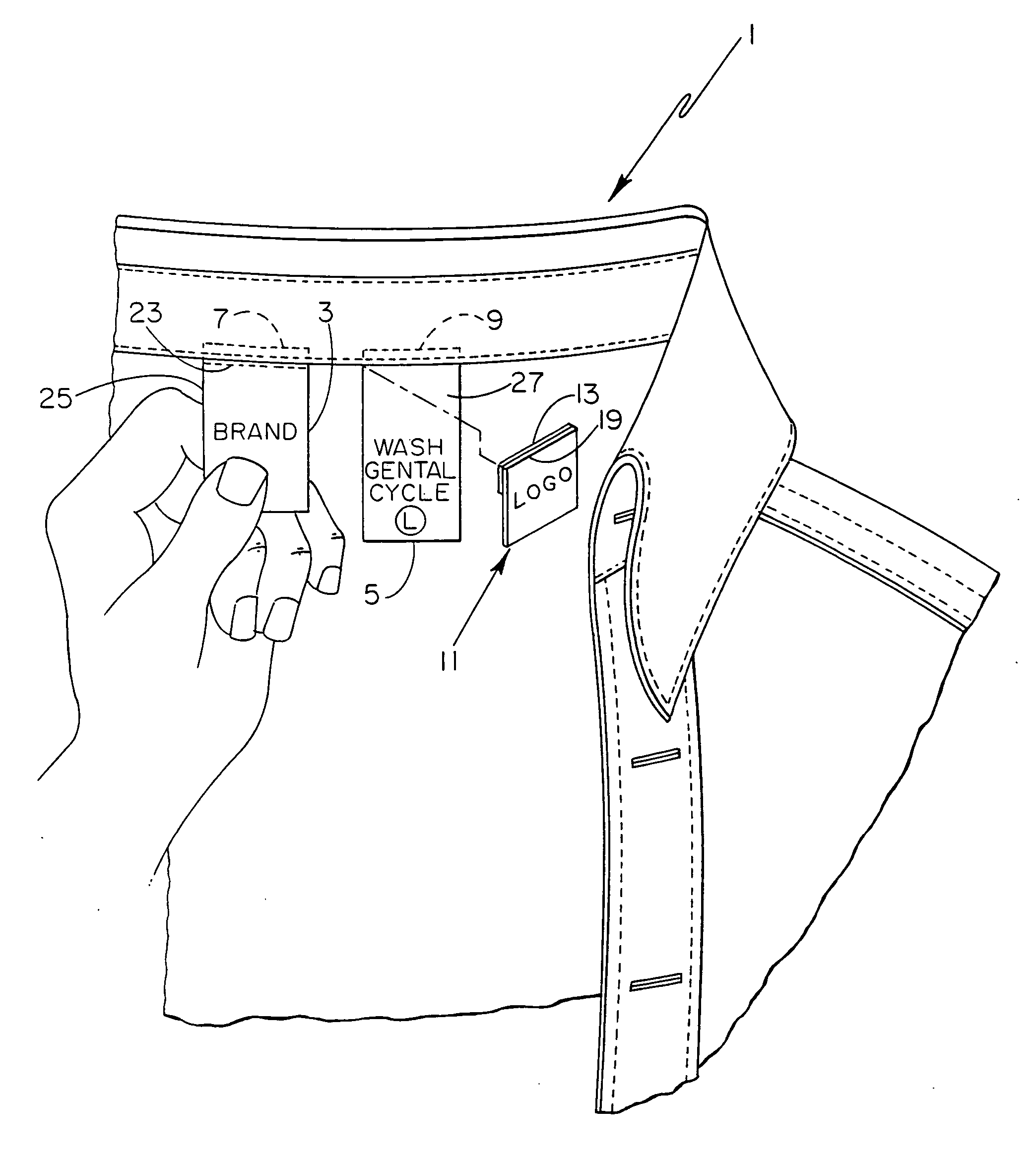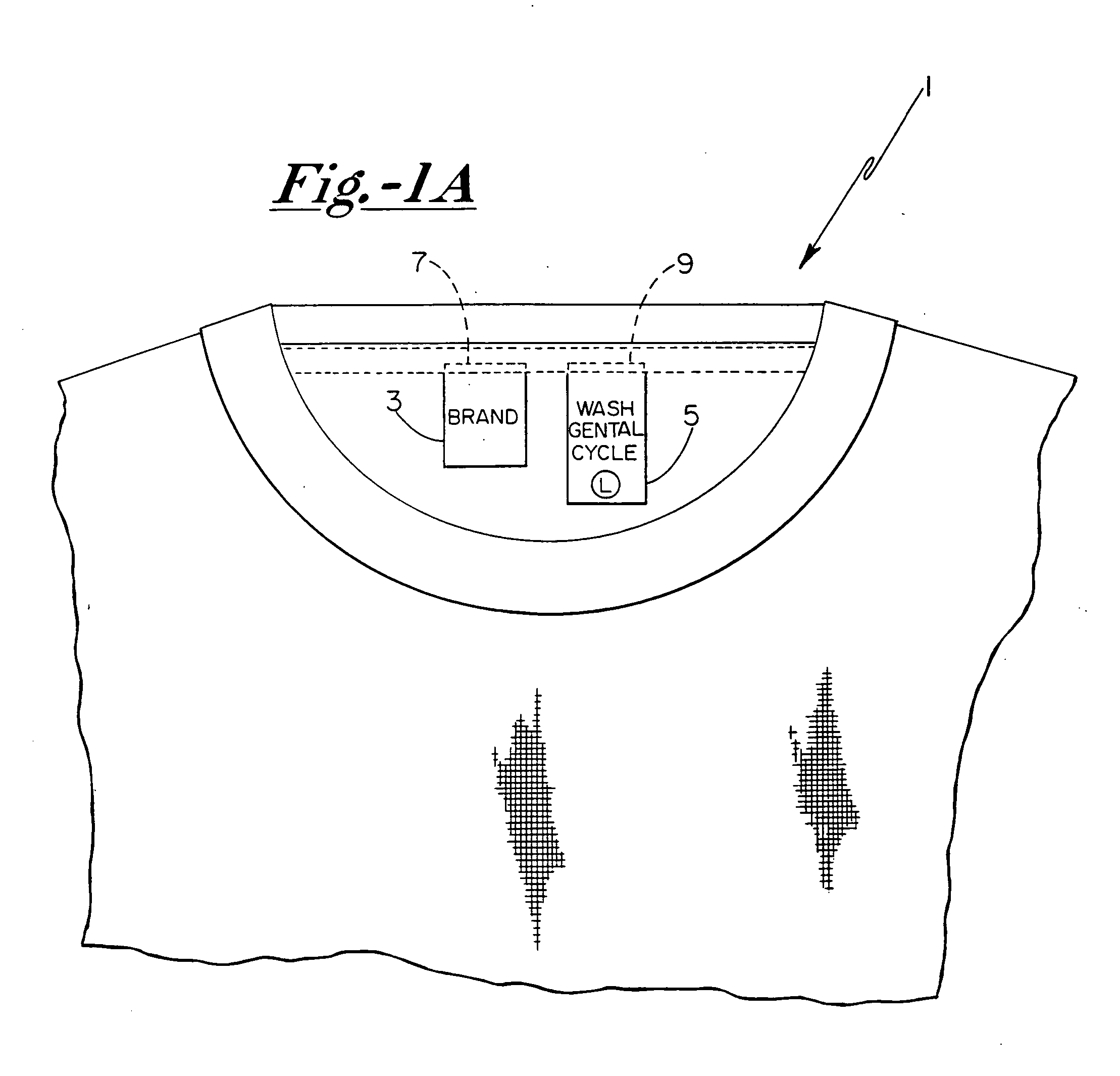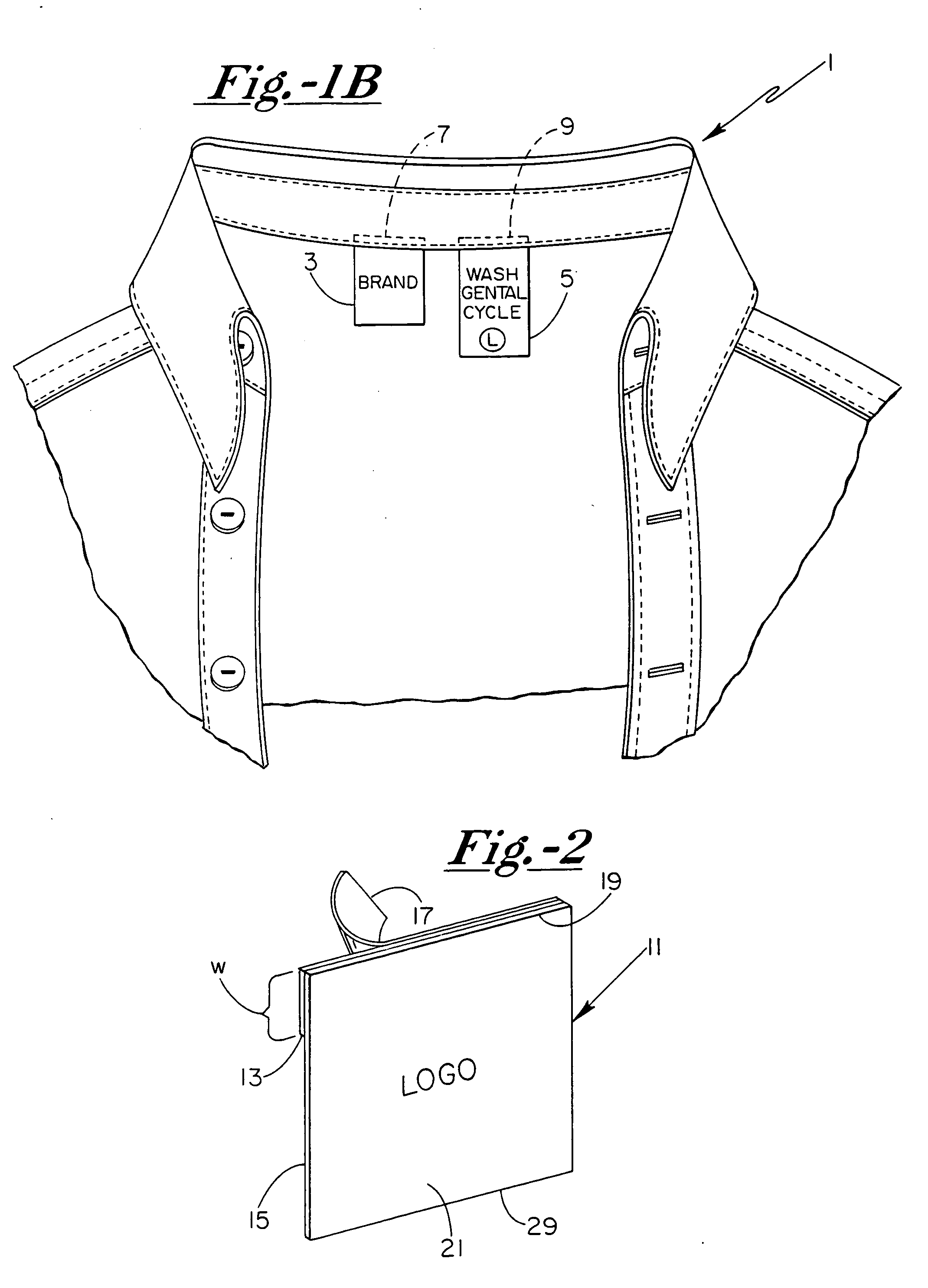Method of private labeling a garment
a garment and label technology, applied in the field of garment labeling, can solve the problems of removing the original brand label, no reasonable means to advertise its own business, and laborious and inefficient process, and achieve the effect of less time-consuming and labor-intensiv
- Summary
- Abstract
- Description
- Claims
- Application Information
AI Technical Summary
Benefits of technology
Problems solved by technology
Method used
Image
Examples
Embodiment Construction
[0016] As stated previously, it has become popular practice for companies and other organizations and / or associations to engage the services of after-market garment decorators to decorate various articles of clothing, such as T-shirts, sweatshirts, etc., with company names, logos, and the like. In connection therewith, the decorators will generally purchase an order of plain pre-manufactured garments, such as that shown in FIGS. 1A and 1B, and apply the desired artwork through embroidery or printing techniques well known in the art.
[0017] Although garment decorators have heretofore sought to advertise their decorating services by private labeling their garments, such efforts have normally been limited to large orders where economics warrant the expenditure associated with sewn-in private labels. For smaller quantity orders, however, sewing private labels into a garment has been found to be cost prohibitive, thus leaving the decorator with no effective way of advertising their busin...
PUM
 Login to View More
Login to View More Abstract
Description
Claims
Application Information
 Login to View More
Login to View More - R&D
- Intellectual Property
- Life Sciences
- Materials
- Tech Scout
- Unparalleled Data Quality
- Higher Quality Content
- 60% Fewer Hallucinations
Browse by: Latest US Patents, China's latest patents, Technical Efficacy Thesaurus, Application Domain, Technology Topic, Popular Technical Reports.
© 2025 PatSnap. All rights reserved.Legal|Privacy policy|Modern Slavery Act Transparency Statement|Sitemap|About US| Contact US: help@patsnap.com



